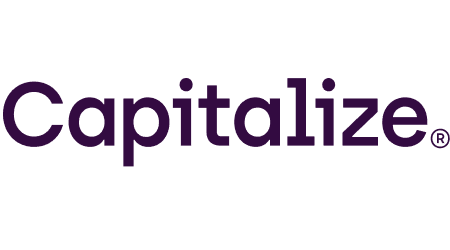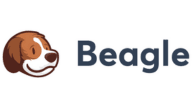
- Free 401(k) search and rollover process
- Find your old 401(k) with Capitalize’s proprietary technology
- Guided rollovers to an IRA of your choice
A 401(k) is an employer-provided retirement savings and investing plan that offers tax benefits. Build your 401(k) portfolio by picking from an investment menu that usually includes stocks, bonds and mutual funds.
To contribute to your 401(k), you set a percentage of your pay that you want to invest. Then, your employer automatically deducts that amount from each paycheck and invests it in your account.
Because your money flows from your check to your 401(k) before it’s taxed, it reduces your taxable income and can lower your tax bill each year. Some companies also match their employees’ contributions.
A 401(k) is similar to an individual retirement account (IRA). Anyone can open an IRA with a bank or brokerage, so you can opt for one if your company doesn’t offer a 401(k). But there are some key differences.
| Enrollment | 2025 contribution limits | Tax advantages | |
|---|---|---|---|
| 401(k) |
|
|
|
| IRA |
|
|
|
Because 401(k) plans vary widely because of employer choices, you may want to consider saving in an IRA in addition to or instead of a 401(k). You can compare retirement account options here.
Your 401(k) grows based on the performance of the assets it invests in. But it also benefits from compound interest. This means interest that your account earns one year is built upon by future earnings.
With simple interest, your interest only builds on the initial deposit. So if you deposited $10,000 and you get an annual interest rate of 9%, it grows by $900 every year. After 30 years, it’ll be $12,700.
Now let’s see how $10,000 would grow in a 401(k). Let’s say your annual interest or rate of return is still 9%. After 30 years, your 401(k) balance would grow to $147,305. And that’s assuming you don’t contribute anything beyond that $10,000 balance.
A 401(k) is managed by a plan sponsor. This sponsor can be your company or a third-party benefits firm. Plan sponsors hire asset-management companies that handle investing matters.
As with any investment, your 401(k) can lose money. The assets your 401(k) invests in may not perform well some years, thereby cutting your earnings.
But think of a 401(k) as a long-term savings vehicle. Over time, markets recover from recessions and even crashes. In fact, the average stock market return for the last 50 years has been 10.9%.
Nonetheless, diversifying your portfolio is one of the best ways to protect your 401(k) from market downturns. This means investing in a variety of securities like stocks, bonds, exchange-traded funds (ETFs) and mutual funds.
Many 401(k) plans offer target-date funds (TDFs). These professionally managed, diversified portfolios automatically shift their investment mix to safer assets, such as bonds and money market funds, as you get closer to retirement age. While not the perfect investment, TDFs can be great tools for those who would rather hand off investment decisions to the pros.
The 401(k) plan is named after a subsection in the Internal Revenue Code. It allows employers to create retirement savings plans to which employees can contribute portions of their wages before taxes. It also permits earnings on these contributions to grow tax-free until they’re withdrawn from the account.
Section 401(k) was added to the code in 1978. But the first 401(k) plan didn’t launch until 1981 when benefits consultant Ted Benna interpreted the code to create one for a client.
There are two main types of 401(k) plans offered by employers.
| Eligibility | Contribution limits for 2025 | Tax advantages | |
|---|---|---|---|
| Traditional 401(k) | Determined by plan sponsor |
|
|
| Roth 401(k) | Determined by plan sponsor |
|
|
Note that the above limits apply to all types of 401(k) accounts, which fall under the umbrella of defined contribution (DC) plans. So if you have a traditional and a Roth 401(k), your contribution limit is $19,500 across both plans.
Also, the contribution limits listed above represent employee contributions, also known as elective deferrals. Some companies offer employer matches. The maximum contribution from you and your employer is $70,000.
However, the IRS states that contributions from all sources can’t exceed 100% of your compensation.


To make the most out of your 401(k), it may be helpful to think of the lifecycle of the 401(k), from its inception through your retirement.
Some companies auto-enroll their employees in their 401(k) plan. So follow the instructions on your plan documents or ask your HR department for these. Otherwise, it’s a pretty straightforward process.
Before you get your paycheck, your employer automatically deducts an amount of your choosing to direct to your 401(k) plan if you choose to contribute. It’s common practice to pick a dollar amount or a percentage of your pay.
Contribute the lesser of 100% of your salary or the applicable contribution limits set by the IRS each year. For 2025, the 401(k) contribution limits are $23,500 or $31,000 if you’re 50 or older.
The taxation of 401(k)s generally depends on the type of plan and the age at which you withdraw money.
Withdrawing from your 401(k) often comes with complex rules, and doing so without incurring heavy penalties requires meeting certain age requirements.
The good news is that for some needs you can borrow money from your 401(k) and avoid penalties. Read the rules for 401(k) loans here.
Some companies offer employer matches. The rules for this vary across companies.
If you find your 401(k) plan isn’t so hot, you have other options.
A traditional IRA is essentially a traditional 401(k) that’s not provided by an employer.
This works similarly to a Roth 401(k), but nearly anyone can open a Roth IRA through a bank or brokerage.
An HSA is a tax-advantaged savings and investing account designed to help you pay for medical expenses. But you can also use your HSA for retirement.
This is your basic investing account.
Withdraw from your 401(k) without penalty if you’re 59.5 or older. Early withdrawal penalties on some hardship withdrawals may be waived if your plan allows these.
The rules vary by plan. But you can usually waive the penalty if you need the money to cover the following.
Roll over a 401(k) when you experience a triggering event, also called a qualifying event. Your plan sponsor defines these events, but they’re usually the following.
If a triggering event occurs in your life, you have several options.
These companies offer IRAs or offer help managing retirement accounts.
The Finder Score crunches 147 key metrics we collected directly from 18+ brokers and assessed each provider’s performance based on nine different categories, weighing each metric based on the expertise and insights of Finder’s investment experts. We then scored and ranked each provider to determine the best brokerage accounts.
We update our best picks as products change, disappear or emerge in the market. We also regularly review and revise our selections to ensure our best provider lists reflect the most competitive available.
Paid non-client promotion. Finder does not invest money with providers on this page. If a brand is a referral partner, we're paid when you click or tap through to, open an account with or provide your contact information to the provider. Partnerships are not a recommendation for you to invest with any one company. Learn more about how we make money.
Finder is not an advisor or brokerage service. Information on this page is for educational purposes only and not a recommendation to invest with any one company, trade specific stocks or fund specific investments. All editorial opinions are our own.
401(k) plans allow you to invest in your retirement while enjoying tax breaks. Your contributions are tax-deductible, and investment earnings grow tax-free. Some companies even offer matching contributions.
But the quality of 401(k) plans varies across companies. In some cases, an IRA may be a better option. You can open one with most brokerages, but compare your choices to find the one that’s right for you.
| Response | Contributions | Balance |
|---|---|---|
| Amount | $7,409.56 | $196,192.48 |
In 2023, the average American has an average of $196,192 in their 401K and plans to contributed an average of $7,410 in the last year.
Get up to a 3% IRA match with Robinhood and Acorns or a 1% IRA match with Public. See how to qualify here.
The best Roth IRA investments may include a mix of index funds, dividend stocks, bond funds and other long-term investments.
Explore the advantages and shortcomings of the best rollover IRAs for beginners, mobile trading, advanced traders and more.
Check out our picks of the best Roth IRA accounts for beginners, options traders, hands-off investors and more.
Check out our picks of the best IRA accounts for beginners, options traders, hands-off investors and more.
The rush of turning $19,500 into $1 million can be enticing, but it’s not always the best idea.
Learn the differences between a Roth IRA and a traditional IRA.
Learn how Roth IRAs work and who qualifies to open one.
Need a quick influx of cash? Before you dig into your retirement funds, consider these drawbacks.
Here’s how retirement savings accounts work and how to compare your options.